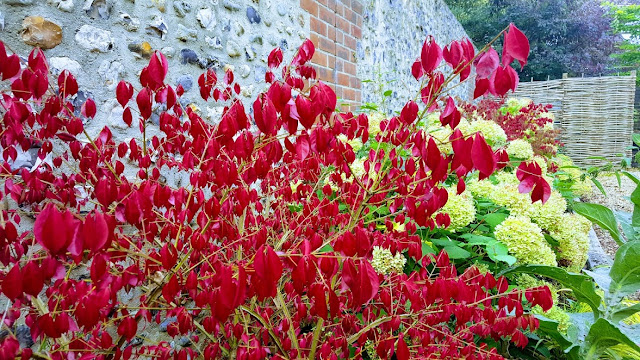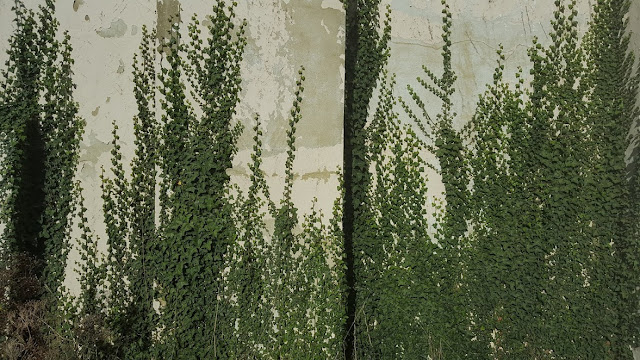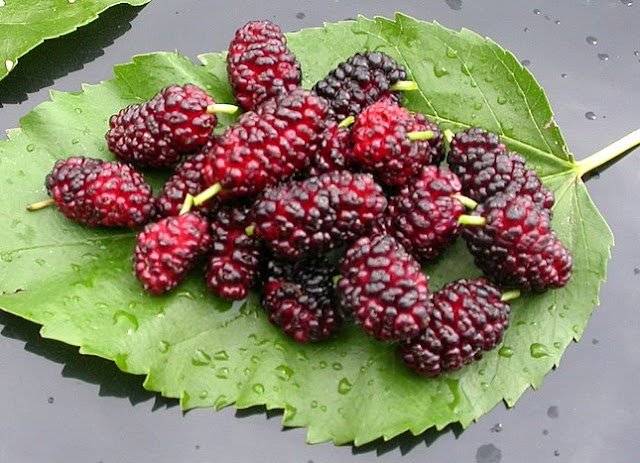 |
| How to kill off ivy |
Our native English Ivy - Hedera helix, is a fantastic example of a species perfectly suited to its environment. The trouble is that it has a reputation for both strangling other plants (which it doesn't) and for damaging the mortar in brick or stone walls (which to be fair it does). While it can be argued that it doesn't strangle it will both out-compete a 'host' plant by smothering or cause it to fall down due to the sheer weight of the continuing Ivy's growth.
 |
| How to kill off Ivy |
What is undeniable is that Ivy can easily outcompete the majority of ornamental garden plants, and often reseeds itself to the point of becoming a pernicious weed. If left unmanaged it can completely cover single and two story building as well becoming a menace in both tiled and thatched roofs.
So how do you get rid of ivy? Well there are two ways, the first is the hard work organic way while the second is the easier herbicidal (using weed killers) way.
How to kill off Ivy organically
 |
| How to kill off Ivy |
Quite simply you would cut off all growth from the base of the plant and allow the top growth to die off before removing from whatever is as attached itself to.
While you are waiting for this to happen you can spend your evening digging out the extensive though usually quite shallow root system.
If your Ivy is growing against a tree then it is unlikely that you can dig out the root system without damaging the trees root system. In this case cut the Ivy stems back to ground level year on year which over time should help to weaken it to the point of death. Alternatively you it may be able to cover the Ivy in sheets of thick black plastic - effectively smothering it over time.
You can't throw your discarded roots and still-green stems onto a compost heap as it is likely to form new growth. Arguably the best policy is to burn it once dug up or removed.
How to kill off Ivy using weed killers
 |
| How to kill off Ivy |
Translocated weed killers can be used throughout the growing season so long as temperatures do not drop below 7 degrees Celsius. They are best used on Ivy growing on walls, fences etc but cannot be used when growing on other leafy plants. Glyphosate products affect chlorophyll and so can be used when growing up barked trunk. Tree genera such as Juglans (Walnut), Tilia and Laburnum are not suitable as they have significant levels of chlorophyll in the stems and trunks - especially when young.
Gel treatments will perform best using a gel application while larger specimens will require a spray. Be aware that nearby plant specimens may also be at risk from the weed killer application, especially in windy conditions, and so may need to be covered to prevent accidental weed killer application.
Once your chosen treatment has been applied wait until the leaves turn brown before cutting the main branched to near-ground level. The stems can be allowed to dry off before removing, however the root system remain in the ground where over time it will naturally rot back into the soil.
For Ivy growing on trees which have had the branched removed, the remaining stump can be treated with a stump and root killer containing the active ingredient of glyphosate or triclopyr. Always read the packaging before application.
For related articles click onto the following links:
































